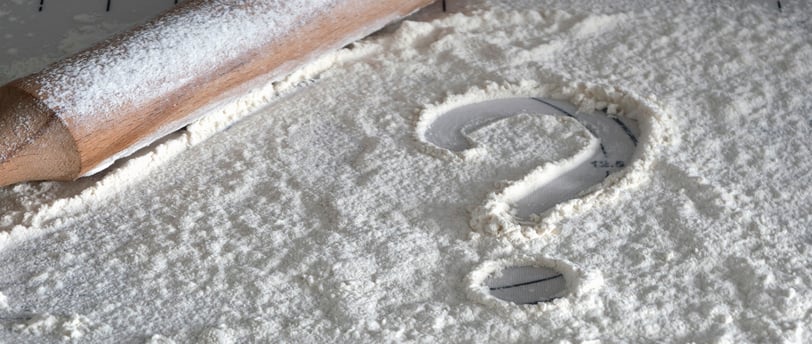Sourdough FAQ + Troubleshooting
Some tips and tricks for that perfect crusty loaf.


Can I use bleached flour to feed my starter?
Yes, you can use bleached all-purpose flour; however, it can affect the sourdough cultures. If your starter isn’t forming bubbles from fermentation, switch to unbleached all-purpose flour.
While creating my starter, there weren’t any bubbles forming, and a layer of hooch developed. What do I do?
You just need to strengthen it during the next day of the process. Feed it a 2:1 ratio of flour to water (convert this ratio to the starter recipe you’re using). More flour and less water will continue the process while strengthening the cultures that are forming.
How long does sourdough starter last?
Sourdough starter can last a lifetime! Many people have had theirs for 30-50 years. You keep feeding it on a regular basis, once per week.
How much care will my sourdough starter need?
It depends. If you’re storing the starter on the countertop, you’ll need to feed it every day. If you’re storing it in the fridge, the fermentation process slows down, so you’ll only need to feed it once per week. Fridge storage is the most popular option.
When do you know if your starter has gone bad?
It’s not often a sourdough starter goes bad, but if it does, it’ll turn dark black and/or smell like mildew. If the starter has a gray tint to it and smells good, it’s still safe to use; just give it a feeding.
If I want to bake something two days in a row, can I leave my starter on the countertop for both days, and do I have to store it in the fridge in between?
If you’re usually storing the starter in the fridge, you can leave it on the counter for as many days as you’d like to use it. Then put it back in the fridge when you’re ready.
How do you know when your sourdough starter is ready to use?
It’s ready to use when it’s bubbly and has visible bubbles throughout. If it looks like one solid texture, it needs feeding. You can also do the float test. This is where you take a small spoonful of starter and drop it into a glass of water. If it floats, it indicates that the starter is active and ready to use.
How does the temperature of my starter impact sourdough baking?
The fermentation of your sourdough starter happens faster at higher temperatures and slower at lower temperatures. This is why storing a starter on the counter requires daily feeding, while fridge storage only requires feeding once per week. It’s best to bake with a starter that’s 20 to 24 degrees Celsius or 68-76 degrees Fahrenheit.
Does sourdough starter have health benefits?
Yes, sourdough starter has fermented cultures, which adds gut health benefits to the foods you create with it. Cultures can also make digesting these foods easier, so our bodies can process them better.
